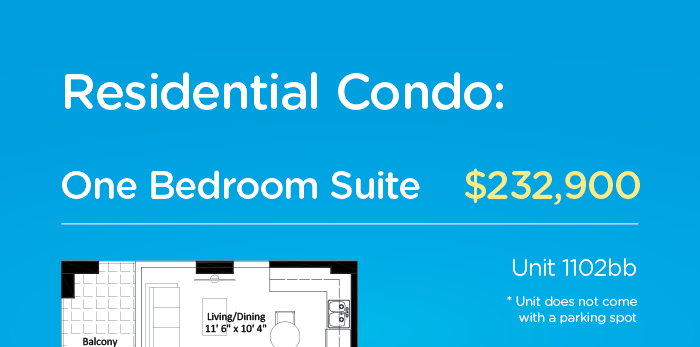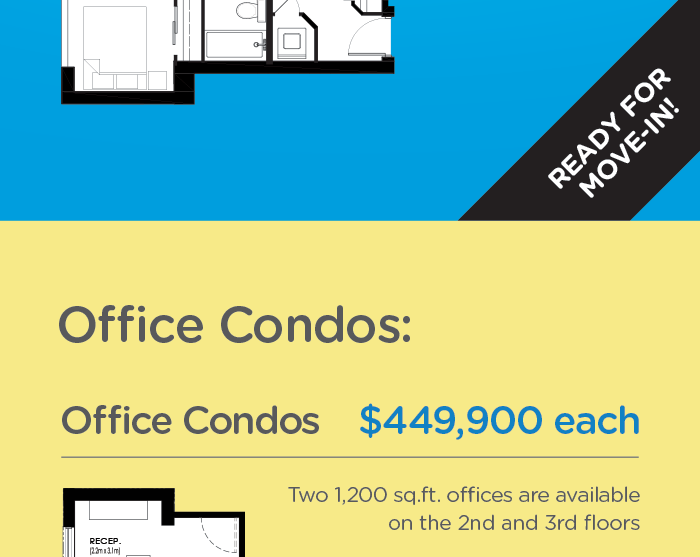Posts: 1,709
Threads: 2
Joined: Aug 2014
Reputation:
34
(04-06-2016, 08:28 AM)BuildingScout Wrote: (04-06-2016, 07:01 AM)plam Wrote: I've read that all-glass building envelopes are actually kind of problematic for all sorts of practical reasons (e.g. energy efficiency).
A lot of that was information fed to the press by the not-glass-segment of the construction industry. I pointed out, for example, that in Europe the highest levels of energy efficiency essentially demand a glass enclosure on the building, which is the exact opposite of what said lobbyists were claiming.
A building enclosed in glass is different from a glass-walled building. You can get all kinds of temperature and noise control from both, but trying for all-glass solutions tends to perform worse and cost more, though not always.
Posts: 10,274
Threads: 65
Joined: Sep 2014
Reputation:
295
(04-06-2016, 08:45 AM)Viewfromthe42 Wrote: (...) tends to perform worse and cost more, though not always.
And this is the problem with generalizations. The best of type X building may be better than best of type Y, or the worst of type Y may be worse than the worst of X. But that doesn't mean that all X are great, all Y are terrible, or even that any given X is better than any given Y.
As for me, all I said was that the use of glass makes the City Centre look more appealing to me than One Victoria.
Posts: 88
Threads: 0
Joined: Jan 2015
Reputation:
3
I agree that City Centre looks nicer, but I prefer the street level of One Victoria - at least on the King side.
My only complaint is that the second floor over hang on King is lower than ideal as a pedestrian, but I'm just nitpicking  .
Posts: 1,971
Threads: 18
Joined: Aug 2014
Reputation:
37
(04-06-2016, 08:45 AM)Viewfromthe42 Wrote: (04-06-2016, 08:28 AM)BuildingScout Wrote: A lot of that was information fed to the press by the not-glass-segment of the construction industry. I pointed out, for example, that in Europe the highest levels of energy efficiency essentially demand a glass enclosure on the building, which is the exact opposite of what said lobbyists were claiming.
A building enclosed in glass is different from a glass-walled building. You can get all kinds of temperature and noise control from both, but trying for all-glass solutions tends to perform worse and cost more, though not always.
Yes, I've noticed a number of building enclosures. The outside envelope is sometimes glass, sometimes not, but building-within-a-building is a thing here.
Posts: 2,402
Threads: 7
Joined: Aug 2014
Reputation:
48
(04-06-2016, 09:05 AM)tomh009 Wrote: And this is the problem with generalizations. The best of type X building may be better than best of type Y, or the worst of type Y may be worse than the worst of X. But that doesn't mean that all X are great, all Y are terrible, or even that any given X is better than any given Y.
It’s still helpful to be able to say that “on average, x is better than y in terms of a, b, and c criteria.” What plam said about glass-walled buildings is accurate, though I don’t suppose any of us here knows about the specifics of City Centre’s energy efficiency (I would be very interested if someone does).
My feelings are the same as Andy’s- I like the street feel of One Victoria, but agree that City Centre is a bit more attractive. Diversity is good, though, and I think a darker high-rise will add a lot of interest to the skyline.
Posts: 6,468
Threads: 38
Joined: Aug 2014
Reputation:
85
The thing I like least about City Centre is the bland entranceway at the corner. That and the bare concrete wall facing the laneway - it should have brickwork on the smooth panels between the scored "pillars". I suspect that the entrance to One Victoria will be rather modest as well.
Posts: 19
Threads: 0
Joined: Aug 2014
Reputation:
0
04-06-2016, 01:32 PM
(This post was last modified: 04-06-2016, 01:33 PM by modernizt.)
(04-06-2016, 08:28 AM)BuildingScout Wrote: (04-06-2016, 07:01 AM)plam Wrote: I've read that all-glass building envelopes are actually kind of problematic for all sorts of practical reasons (e.g. energy efficiency).
A lot of that was information fed to the press by the not-glass-segment of the construction industry. I pointed out, for example, that in Europe the highest levels of energy efficiency essentially demand a glass enclosure on the building, which is the exact opposite of what said lobbyists were claiming.
What are you talking about? Glass offers almost no insulating value, and insulated spandrel panels still don't come anywhere close to the thermal/insulating performance of an insulated solid wall system. (And yes, lobbying is always a part of these discussions but that goes both ways. It's completely fair for opinions against window-wall's abundant use - many of which come from building scientists - to be present in the discussion.) There are ways glazing can be used to benefit a building's environmental performance but it depends on the orientation of a building on site and the % of the exterior envelope being glazed. To say that glazing is a boon to uber-sustainability is a complete misnomer.
Before the misinformation gets too far in this thread - let it be known that glazing systems are weak in terms of thermal performance. That said, there are many ways to mitigate this using the latest building science advancements, and like much of architecture, decisions often fall in the grey area between matters of sustainability/energy efficiency and other architectural concerns such as aesthetic, feel of the space, light, ventilation, tectonics, etc. etc.
So, no, it's not as simple as "glass is bad". But glazing systems do indeed fall short of many alternatives when it comes to energy performance of a building.
City Centre has a number of solid insulated wall areas as well as large areas clad in spandrel glass from what I remember seeing (I'll have to peek into the thread), but a fair bit of it is clad in window wall (which is generally a weaker system than curtainwall when it comes to performance / heat loss / thermal bridging / lifespan). One Victoria seems a fair bit more conservative in terms of glazed area, however I feel as though all the spandrel glass at the top hurts its appearance.
Remember that in Ontario now, a 60/40 solid-to-glazed ratio applies in the building code, so you will see less vision glass on new construction and more spandrel glass, as well as (hopefully) more buildings that embrace an architecture of solid walls with punched-out windows in ways that are architecturally pleasing. A lot of architects rely on spandrel glass to create the all-glass aesthetic many of us have come to love, but unfortunately spandrel glass often looks crappy and it doesn't offer the insulating value of a solid wall, so it's often lose-lose in my opinion.
Posts: 1,227
Threads: 6
Joined: Oct 2014
Reputation:
31
04-06-2016, 02:46 PM
(This post was last modified: 04-06-2016, 02:51 PM by BuildingScout.)
(04-06-2016, 01:32 PM)modernizt Wrote: What are you talking about? Glass offers almost no insulating value, and insulated spandrel panels still don't come anywhere close to the thermal/insulating performance of an insulated solid wall system.
Before the misinformation gets too far in this thread - let it be known that glazing systems are weak in terms of thermal performance. That said, there are many ways to mitigate this using the latest building science advancements, and like much of architecture, decisions often fall in the grey area between matters of sustainability/energy efficiency and other architectural concerns such as aesthetic, feel of the space, light, ventilation, tectonics, etc. etc.
Gosh, talk about misinformation.
First, glass is a wonderful insulating material. A 1/4" single pane of glass has the same R-value as four times as much gypsum, three times as much plywood, and 16 times as much brick and/or concrete.
Second, a modern triple pane window has about 3x the R-value of a single pane, so now you have that a modern glass pane has about the same R-value as 16 times as much gypsum, 12 times a much plywood and 48 times as much brick and/or concrete, which is why current European regulations favour glass enclosed buildings.
Third, a glass enclosed building uses glass+air gap+inside glass/wall for insulation.
This gives an R-value of 12 for the glass+air+glass sections and 21 for the glass+air+wall sections. For comparison fiber glass with 2x4 wood studs has an R value of 12, so we just made the glass sections have performance similar to conventional non-transparent insulation and the walled sections have performance second to none.
Posts: 1,227
Threads: 6
Joined: Oct 2014
Reputation:
31
(04-06-2016, 01:32 PM)modernizt Wrote: Remember that in Ontario now, a 60/40 solid-to-glazed ratio applies in the building code,
As best as I understand this is not the case. There are two ways to meet the new Energy guidelines (1) prescriptive or (2) performance based. The 60/40 applies only to the prescriptive path. Builders are welcome to have other ratios if they can prove that their building meets the guidelines through other means (performance path).
Posts: 1,094
Threads: 3
Joined: Aug 2015
Reputation:
57
I still can't get over this patio area, as well as the shade it brings. Pictures don't really do it justice. This will be bustling when King reopens!
![[Image: SJeW61k.jpg]](http://i.imgur.com/SJeW61k.jpg)
Posts: 1,935
Threads: 102
Joined: Aug 2014
Reputation:
18
I really like this development all around and can't wait for it to be completed.
Posts: 4,911
Threads: 155
Joined: Aug 2014
Reputation:
118
Is there a timeframe for retail to open?
Posts: 2,402
Threads: 7
Joined: Aug 2014
Reputation:
48
One Victoria sent out an e-mail this morning advertising a few units still not yet sold. I found it interesting that they have office units on the second and third floor- that’s great, and somehow I missed it.
Also neat was that the one-bedroom unit they advertised is being sold without parking (at $232,900)…though admittedly they didn’t exactly highlight the “no parking” part prominently.
Posts: 2,163
Threads: 17
Joined: Sep 2014
Reputation:
76
(07-06-2016, 10:48 AM)MidTowner Wrote: Also neat was that the one-bedroom unit they advertised is being sold without parking (at $232,900)…though admittedly they didn’t exactly highlight the “no parking” part prominently.
I mean "no parking" is not exactly a selling point. But it's fairly upfront about it.


Posts: 2,402
Threads: 7
Joined: Aug 2014
Reputation:
48
It's not quite fine print, no. I think they could highlight the fact that you are paying "only" that much because it's a unit without a parking spot (but you don't need it anyway because of the location!).
|




 .
.
![[Image: SJeW61k.jpg]](http://i.imgur.com/SJeW61k.jpg)